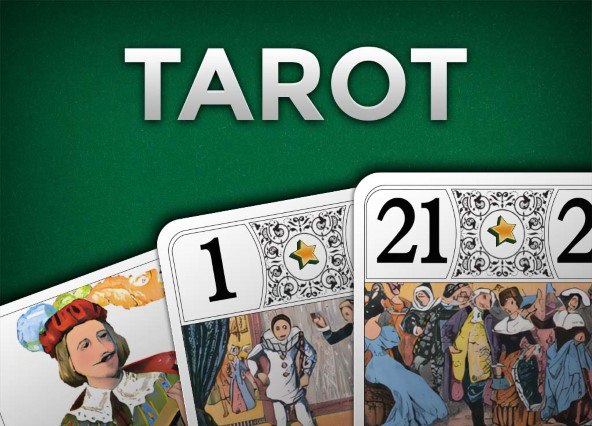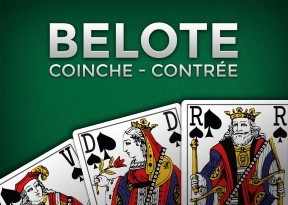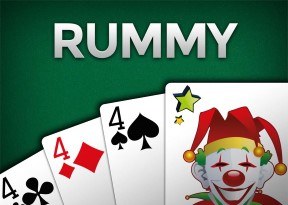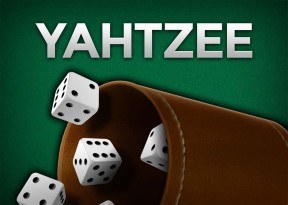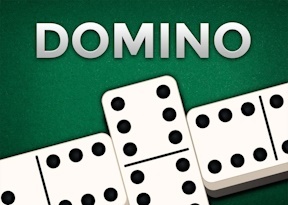Login
Rules of 4 player Tarot
The rules of Tarot laid out below are the official rules of Tarot. They are compliant with the French Tarot Federation (Fédération Française de Tarot). These are the rules which are applicable to 4 player Tarot.The players
A player (the "Taker") plays alone against the three others (the "Defense") who are in partnership and play together as a team.The Taker must attain an amount of points according to the number of Bouts (0, 1, 2 or 3) which he/she possesses. These points are accrued based on the cards forming the tricks gained by the Taker. The aim of the Defense is to prevent the Taker from being able to complete his/her contract or at least to limit the winnings.
What is the composition of the card game of Tarot?
A full game of Tarot contains 78 cards.- 14 cards (from Ace to King) of each of the 4 suits (hearts, spades, clubs, diamonds), 21 illustrated cards which are called "trumps" and a card marked with a star known as "the Excuse".
The 3 Bouts of Tarot
The strategy of the game of Tarot is organised around the 3 very important cards of the game which are called the "bouts" (also "ends" or "oudlers"). This refers to a trump card (known as the Petit), the 21 of the trump cards and the Excuse. These are the cards which are worth the most points in the game of Tarot (4, 5 points each) and which will determine the number of points that will be awarded to the Taker at the end of the round.Value and order of Tarot cards
Here is the order and the value of the Tarot cards:
- In increasing order, from Ace to 10, for each suit: 0.5 points per card
- Jack: 1.5 points
- Knight: 2.5 points
- Queen: 3.5 points
- King: 4.5 points
- In increasing order, from 2 to 20 of the trump suit: 0.5 points
- 1 of the trump suite, 21 of the trump suit and the Excuse: 4.5 points per card
Tarot Contracts
As Tarot is a contract card game, the Taker must achieve a minumum number of points in a round which is defined according to the number of ends which he/she has in his/her tricks at the end of the round:- With 0 bouts: 56 points
- With 1 bout: 51 points
- With 2 bouts: 41 points
- With 3 bouts: 36 points
Betting in Tarot
Tarot is both an individual and a team game at the same time. In effect, the player who takes after the deal (the Taker) is against three other players who make up, therefore, the defense.At the start of a game of tarot, a dealer is designated at random. He/she distributes the cards 3 by 3 counter-clockwise in such a manner that each player receives 18 cards. During the dealing, the dealer must also create a reserve of 6 cards, face down which is known as the "Chien". The first and the last cards dealt must not be a part of the Chien.
Once all the cards have been dealt and the Chien has been built, all the players can look at their cards. The Chien remains hidden. The bids can then begin: each player, starting with the player to the right of the dealer, can choose to declare a contract or to pass.
Note: If the Petit is the only trump in a player's hand the deal is cancelled (Petit with an Excuse is not cancelled). In this case the dealer automatically reshuffles the cards.
There are three possible contracts in Tarot:
- The Garde (The guard): this is the lowest contract, with Chien. The Taker believes his/her chances of success are greater than his/her chance of failure.
- The Garde Sans (The guard without): the game is very good and the Taker who declares this contract believes that he/she does not need to incorporate the cards from the Chien into his game and removes the others. The Chien is placed to the side and will be counted in the Taker's tricks at the end of the round.
- The Garde Contre (The guard against): the Taker's hand is excpeptional and so the Taker decideds to complete his contract without the help of the Chien, the points of which will be counted in the defense's tricks. Note: On Ludicash the bids showing Chelem are actually a Garde Contre along with a Chelem call.
The Chien and the difference
For a Garde, the Taker must arrange his game strategically by exchanging 6 of his/her cards for the 6 cards of the Chien after having shown them. The player is not allowed to place Kings or the Bouts in the Chien. He/she may place the trump cards in the Chien but only if he/she cannot do otherwise, and must show the card to the defense beforehand.
in the case of a Garde Sans or Garde Contre, the cards in the Chien remain face down and hidden until the end of the Tarot round.
Each player speaks once and it is the player with the biggest contract who becomes the Taker.
Proceedings in a game of Tarot
The game proceeds in a counter-clockwise direction. Once the Taken has been determined, the player to the right of the dealer plays the first card. Each player plays one card turn by turn.The player who gathers the trick with the highest card plays the the first card of the next turn and so on.
The rules are as follows:
- Must follow suit, but can play a card of higher value.
- Must follow trump and play a card of higher value that the last, if possible. Otherwise, the player must player must play any trump card, or throw out any card.
- Must play a trump if the player does not have the required suit. If the player before also played a trump, the player must play a higher trump, or to play any card if playing a higher trump is not possible.
- If you are not able to follow suit and have no trumps, you may discard (play any card of your choice)
- All players must consult the preceeding trick if the ongoing trick has not been counted
- The Excuse belongs to the side which hold it, unless it is played in the last turn, in which case the opposing side counts the Excuse amongst its tricks.
- In the rare case of the Excuse with the Chelem: if it is played by the Defense, it remains with the Defense and counts for 5 points. If it is held by the Taker, it must be played at the last trick: in this instance and contrary to the norm, it wins the last trick and completes the Chelem.
Counting of points in Tarot
At the end of the game, the points contained in the tricks of the Taker are counted on one side, and of the Defense on the other.The score is established from a calculation including several elements:
Points gained (or lost)
The total is always 91 points. To win their contract, the Taker must achieve a minumum number of points according the the number of Bouts which he/she has in his/her tricks at the end of the game (in the case of Garde Sans, the points from the Chien are added to the tricks of the Taker) If the numebr of points is achieved exactly, the contract is "juste fait"; if the number of points is higher, the supplementary points are points won; if the number of points is less, the contract is lost and the number of missing points correpsonds to the points lost.
Value of the Contract
All contracts are arbitrarily worth 25 points, 25 points are added to the number of points lost or won.
"Petit au bout" bonus
In the case of "Petit au bout", the side which made the last trick is awarded a supplementary bonus of 10 points.
This bonus is awarded no matter the result of the round; therefore if the defense wins the Petit au Bout bonus which the Taker wins, the bonus is for the defense and is therefore deducted from the positive total of the Taker.
If the Taker wins the "Petit au Bout" bonus but loses their contract, the bonus is for the Taker and is therefore deducted from the positive total of the defense.
Multipliers
This new total is then subjected to a multiplier according to the given contract:
- If it is a PRISE, the total is unchanged.
- If it is a GARDE, the total is multiplied by 2
- If it is a GARDE SANS, the total is multiplied by 4
- If it is a GARDE CONTRE, the total is multiplied by 6
Poignée Bonus
The side which has achieved a Poignée receives a bonus in the case of a gain for its side, but stands for a deduction in the case of a gain for the other side.
The value of the Poignée is identical to that of its contract:
- Simple poignée (10 trumps) = 20 points
- Double poignée (13 trumps) = 30 points
- Triple poignée (15 trumps) = 40 points
Chelem Bonus
The Chelem is awarded on top of the contract, the points being determined according to the given contract and a bonus (or deduction) follows the success. or failure of Chelem.
- Chelem announced and completed = supplementary bonus of 400 points
- Chelem not announced but completed = supplementary bonus of 200 points
- Chelem announced but not completed = 200 points deducted from the total.
Recording the score
Each defender records an even number of points: in negative if the Taker wins, in postive if the Taker loses.
The Taker records three times this total, in positive if he/she wins, in negative if he/she loses.
The total of the four scores of the Taker and the 3 defenders is therefore equal to 0.

